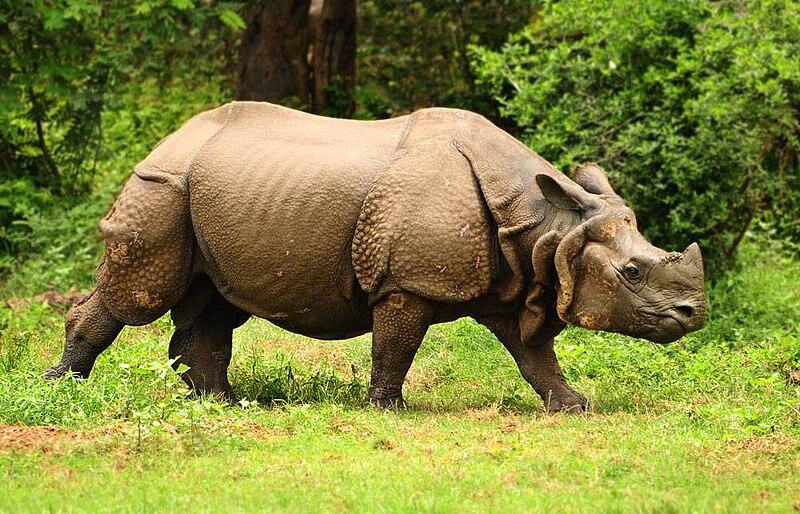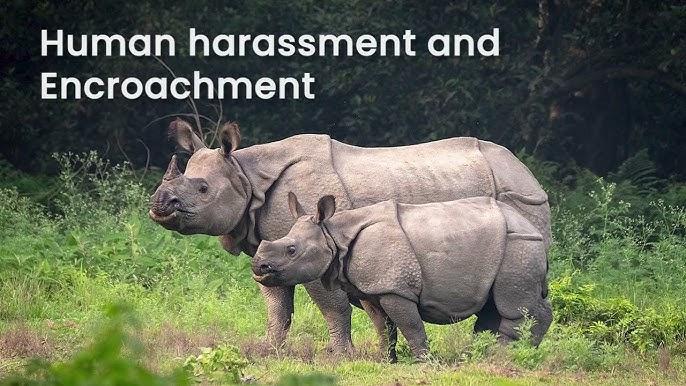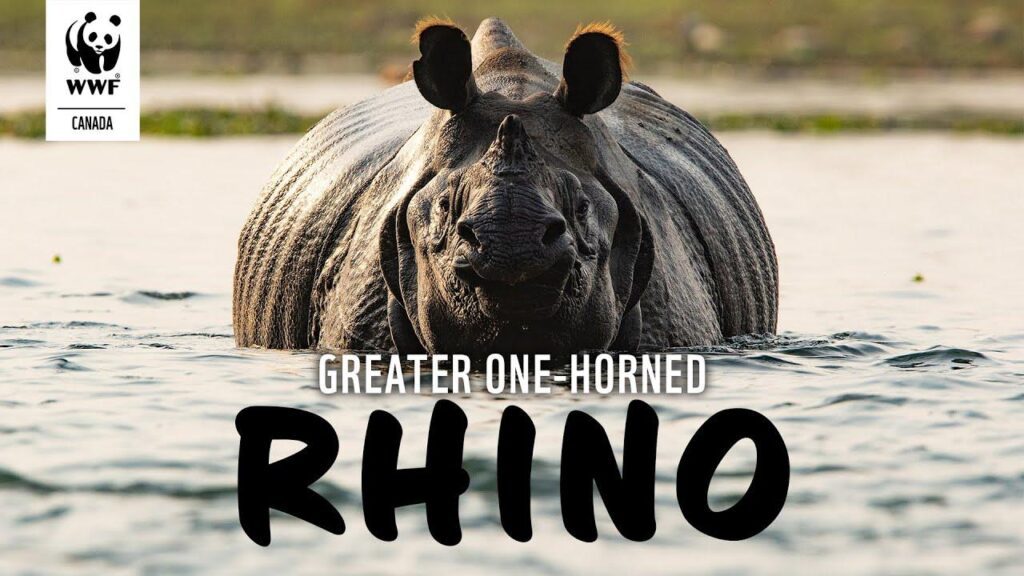IUCN RED LIST STATUS: VULNERABLE
The Great One-Horned Rhinoceros: An Outline
One of nature’s most staggering creatures is the more prominent Greater one-horned rhinoceros, frequently known as the Indian rhinoceros. This creature, which lives in the prairies and bogs of northern India and Nepal, is recognized by its surprising lone horn, and its skin is just about as hard as a shield. These rhinos, which were once thought to be seriously jeopardized, are presently perceived as a worldwide symbol of powerful protection.
FACTS
ORIGIN AND NAME IN SCIENCE
The Greater One-Horned Rhinoceros, from the Greek name “rhino” and the Latin names “unicornis” and “cornis,” is a giant rhino species found on Earth. Its massive, sturdy body that weighs between 1,800 and 2,700 kg (4,000 and 6,000 pounds) is quite a sight in nature and a strong land mammal.
This rhino stands 1.75 to 2 meters tall and measures 3 to 3.8 meters in length. Its hairless, ashy grey skin forms thick folds, resembling armor plating. The subcutaneous fat aids thermoregulation, and the skin is thin and soft in between. One-horned rhinos have a single horn, 20-61 cm long, up to 3 kg in weight, used for food and root search. Hair is located at the tail, ears, and eyelashes.

HABITAT
Greater one-horned rhinos live in swamp-like or grassland habitats. The majority live in protected habitats.
DIET
Large one-horned rhinos graze and browse predominantly on different species of grasses, leaves, and aquatic plants and fruits.
THREADS
Poaching and habitat degradation caused the Greater One-Horned Rhino population to drop to less than 200 a century ago.
Illegal Trade in Wildlife
Illegal trade in rhino horn threatens the Greater One-Horned Rhinoceros even with international bans and legal protection. There is a need for public awareness and enforcement to break myths about the use of rhino horn.

Poaching and habitat loss
Greater one-horned rhinos are most threatened by human harassment and encroachment. For thousands of years, rhinos have been hunted for their sport and horn. Hunting at the start of the 19th century almost wiped off the Greater One-horned rhino. Because alluvial plain grasslands are crucial to rhino survival, their removal is the primary cause of the sharp reduction in rhino populations. Over time, the Greater One-Horned Rhinoceros’ native range has been drastically diminished due to human activities including urbanization and agricultural growth.
The number of Greater One-horned rhinos has increased from less than 200 in the previous century to almost 4,000 today thanks to stringent protection from Indian and Nepalese wildlife authorities. But poaching has persisted, and without sustained and boosted support for conservation initiatives in India and Nepal, progress is in jeopardy.
The Significance of Rhino Protection
The Bigger One because they preserve grasslands and promote biodiversity, horned rhinos are essential to their ecology. Additionally, rhino-based ecotourism boosts regional economies by offering monetary rewards for conservation. By preserving this species, local populations will benefit economically and the environment will remain balanced.

THE ACTIONS OF THE WWF
The Greater One-Horned Rhino’s Conservation and Protection Initiatives by WWF
1. Environment Assurance and Rebuilding
The more prominent one-horned rhino’s normal natural surroundings are the focal point of WWF’s endeavors to safeguard and reestablish them. WWF guarantees that rhinos have safe admittance to assets and may move around by laying out untamed life halls and amplifying safeguarded regions like Kaziranga Public Park.
2. Forestalling Poaching
WWF works with legislatures and protection associations to battle poaching. To reduce the chance of poaching, they support watches in high-risk districts and furnish officers with state-of-the-art gear like robots, GPS-checking gadgets, and camera traps.
3. Research and Monitoring
To monitor rhino populations and behavior, WWF funds scientific research. They create plans to deal with problems and identify dangers early on based on research findings.
4. Including Neighborhood People Group
To make protection a common obligation, WWF collaborates with neighborhood networks to advance ecotourism and manageable occupations.
5. Promoting Modifications to Policies
To stop the illegal trade and guarantee the long-term survival of rhinos, WWF advocates for stronger wildlife protection regulations and increases public awareness worldwide.
In conclusionThe Greater One-Horned Rhinoceros is not only the giant of the animal kingdom, but it is also a keystone species in its ecosystem. Its distinctive physical features, behavior, and role in nature make it a very important part of the biodiversity in India and Nepal. While challenges still exist, ongoing conservation efforts hold much promise for this incredible species’s future. We should save these astonishing creatures and their natural surroundings as we honor this accomplishment to ensure their endurance for impending ages. By cooperating, we can guarantee the endurance and success of this notable species.
Read More: